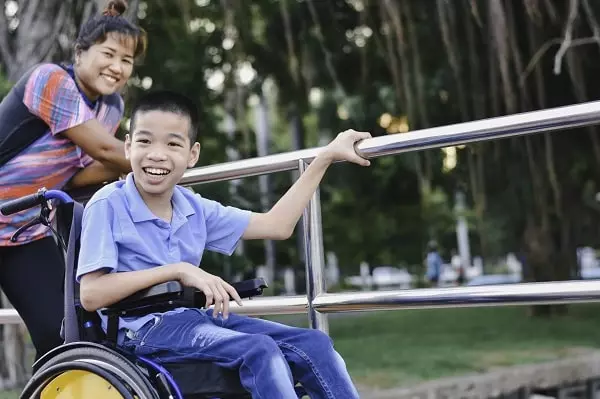By the School of Education
Special education teachers ensure an equitable education to millions of students across the nation. With 14 percent of students needing some type of special education service, these teachers play a key role in making sure all students have a chance to thrive academically. General education teachers and students alike rely on special education teachers’ specialized knowledge in skills assessment and the development of learning activities with special needs and disabilities in mind. For this reason, the current special education teacher shortage is especially worrying. So, what’s causing this shortage, and how can leaders begin to address it?
Current and aspiring educators looking for a deeper analysis of the issue should consider American University’s Online School of Education, which offers students expert knowledge about special education challenges, preparing them to address the current shortage.
An Overview of the Current Special Education Teacher Shortage
Special education teacher shortages have persisted for years, putting the education of the country’s most vulnerable students in a precarious position. The Office of Special Education Programs currently lists the national shortage at 8 percent. This large and growing problem affects schools across the country, but the shortage pertains to more than just insufficient numbers of special education teachers.
The shortage also refers to inadequate numbers of properly trained special education teachers. In fact, many first-year special education teachers across the country have not completed special education preparation programs. In California for example, of the 8,470 new special education teachers hired in 2017-18, only 3,274 were fully credentialed.
To gain more insight into the special education teacher shortage, consider the following statistics:
Unequal Distributions of the Special Education Teacher Shortage
While the special education teacher shortage affects schools across the spectrum, it tends to impact high-poverty schools most acutely. They face the greatest challenges when it comes to attracting properly trained and experienced special education teachers.
In recent years, enrollment in all teacher preparation programs has dropped considerably, and the number of people completing special education programs has dropped 14 percent, meaning fewer credentialed teachers are available for a growing number of vacancies. Low-income and rural schools find it especially hard to attract and retain the dwindling number of special education teachers. The special education teachers these schools do manage to hire often have less experience than those hired by more affluent schools. For example, many special education teachers in urban and rural districts work with provisional licenses after meeting just a few requirements:
Typically, special education teachers at high-poverty schools have received less special education training and are more likely to hold certifications in areas other than special education compared with teachers at low-poverty schools.
Attrition and the Consequences of the Special Education Teacher Shortage
Data shows that teachers with limited preparation tend to drop out of the profession more frequently than those who finish traditional preparation programs. The reliance on provisional and alternative credentialing programs that send underprepared special education teachers into classrooms contributes to the high teacher turnover rate.
This constant churn of losing and rebuilding teaching faculties comes at a price. Several studies have shown teacher attrition can lower student achievement in English language arts and math and hurt the overall effectiveness of teachers in a school. In addition to the academic price, teacher attrition has a huge financial price tag: the Learning Policy Institute estimates it costs approximately $8 billion dollars a year. As teachers cycle through the profession in increasing numbers, districts must funnel huge amounts of money into recruiting and training new educators to replace them.
The public school system is based on equity. The reputations of the teaching profession and the system rest on their ability to provide stable learning environments to all students. As such, the ongoing special education teacher shortage compromises the entire public school system and tarnishes the profession’s reputation. It creates instability, limits students’ learning opportunities, and results in countless hours of lost instructional time. Additionally, the fact the shortages disproportionately affect marginalized students widens the achievement gap and raises questions of educational equity.
A Look at the Reasons Behind the Special Education Teacher Shortage
Several factors are driving the special education teacher shortage. As mentioned, steep enrollment declines in teacher education programs, alongside high attrition for special education teachers, contribute to the shortage. Working conditions, low pay, and insufficient training and support also factor heavily.
Stressful Working Conditions for Special Education Teachers
Special education teachers often work in stressful environments. Just like general education teachers, they must deal with the challenges of student poverty, insufficient parental involvement, student absenteeism, and a lack of resources. However, they also must contend with excessive paperwork and overwhelming caseloads without the support they need.
For example, special education teachers can find themselves in classrooms without aides trying to teach 20 students with different special needs who require customized instruction. On top of that, they may have a caseload of 20 students who require individualized education programs (IEPs), annual testing, and regular meetings with parents and other teachers. Additionally, failing to meet deadlines or submit necessary paperwork can constitute a federal offense, as IEPs are federally mandated, which puts further pressure on special education teachers.
Click here to read the full article on the School of Education.



